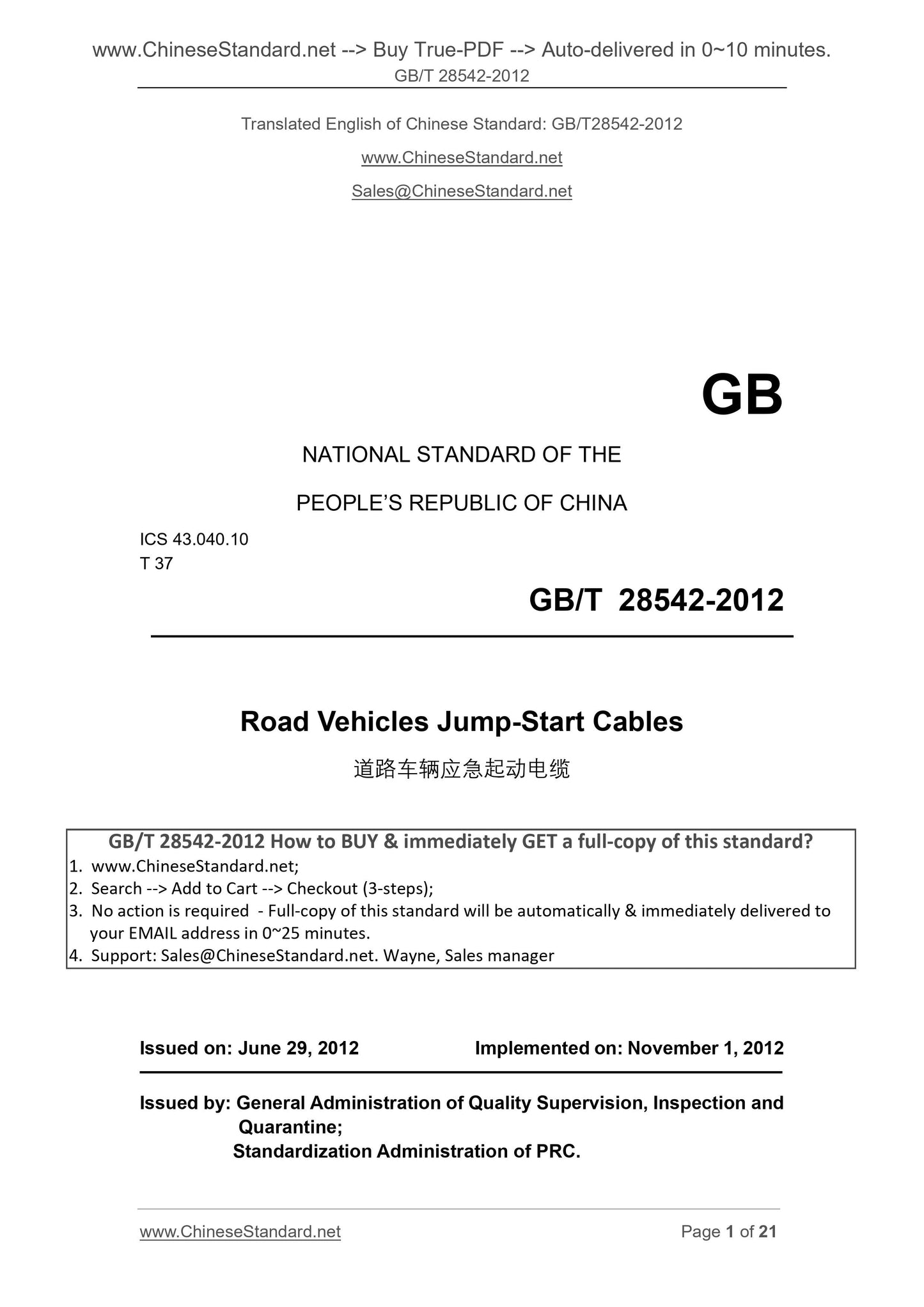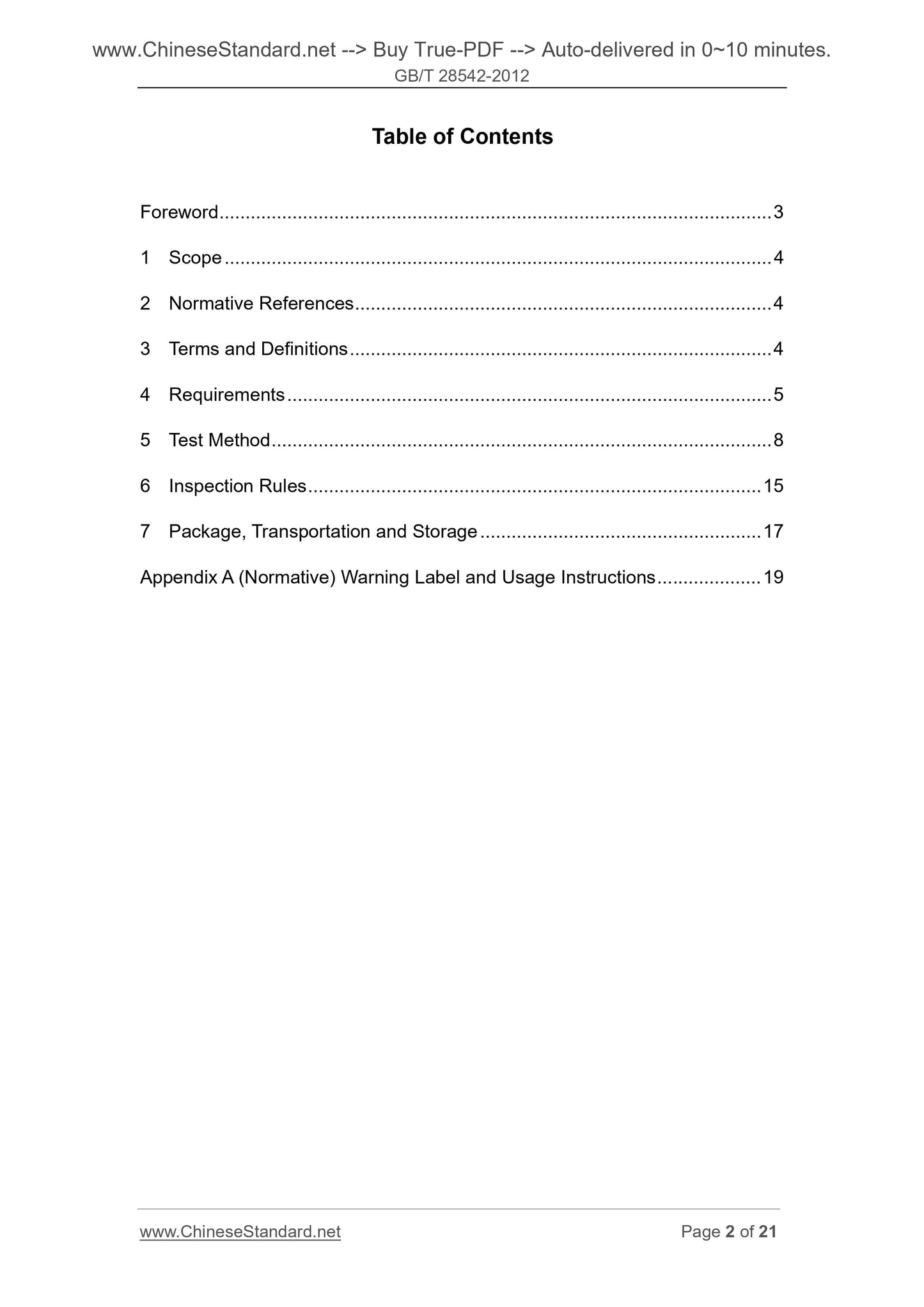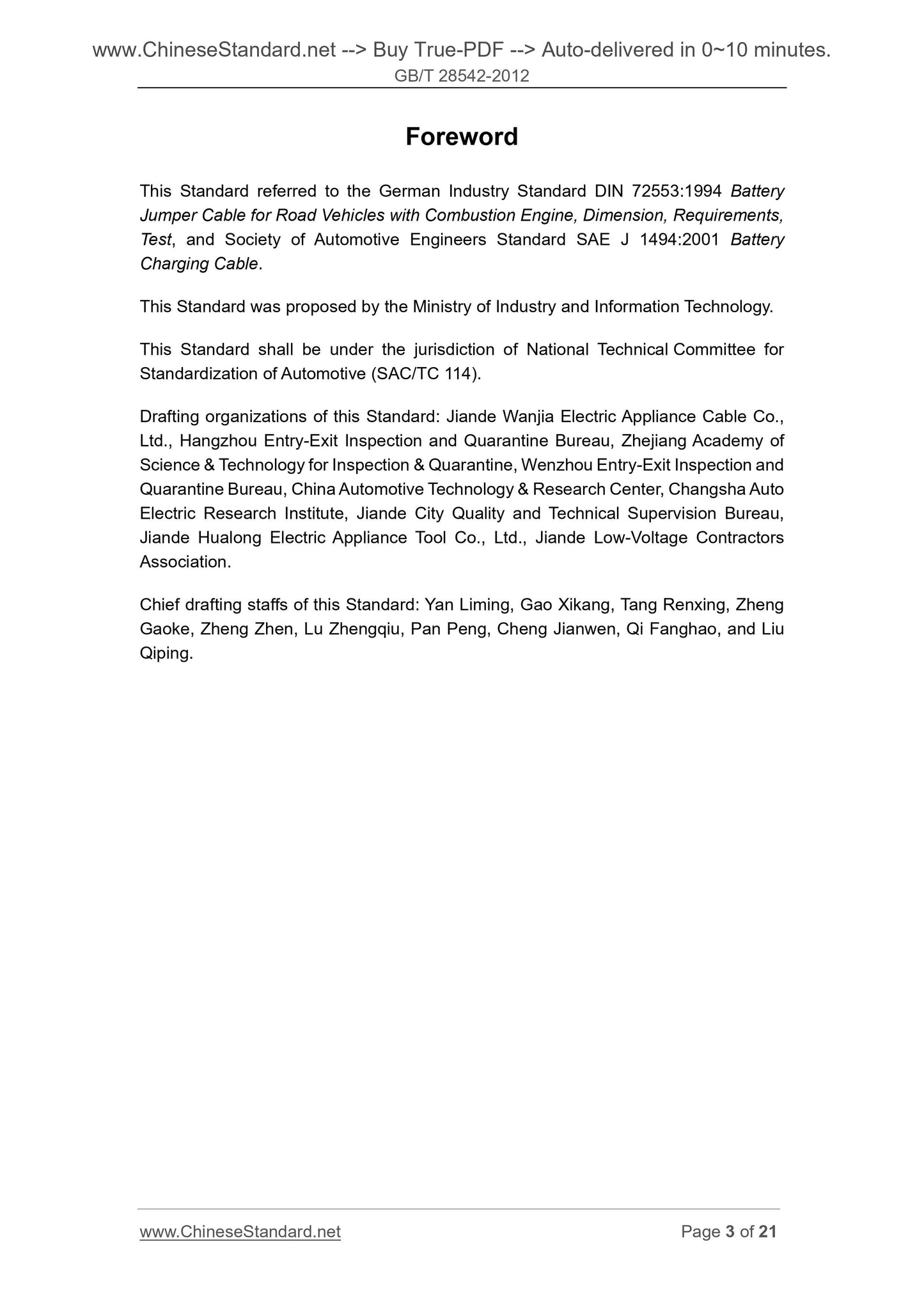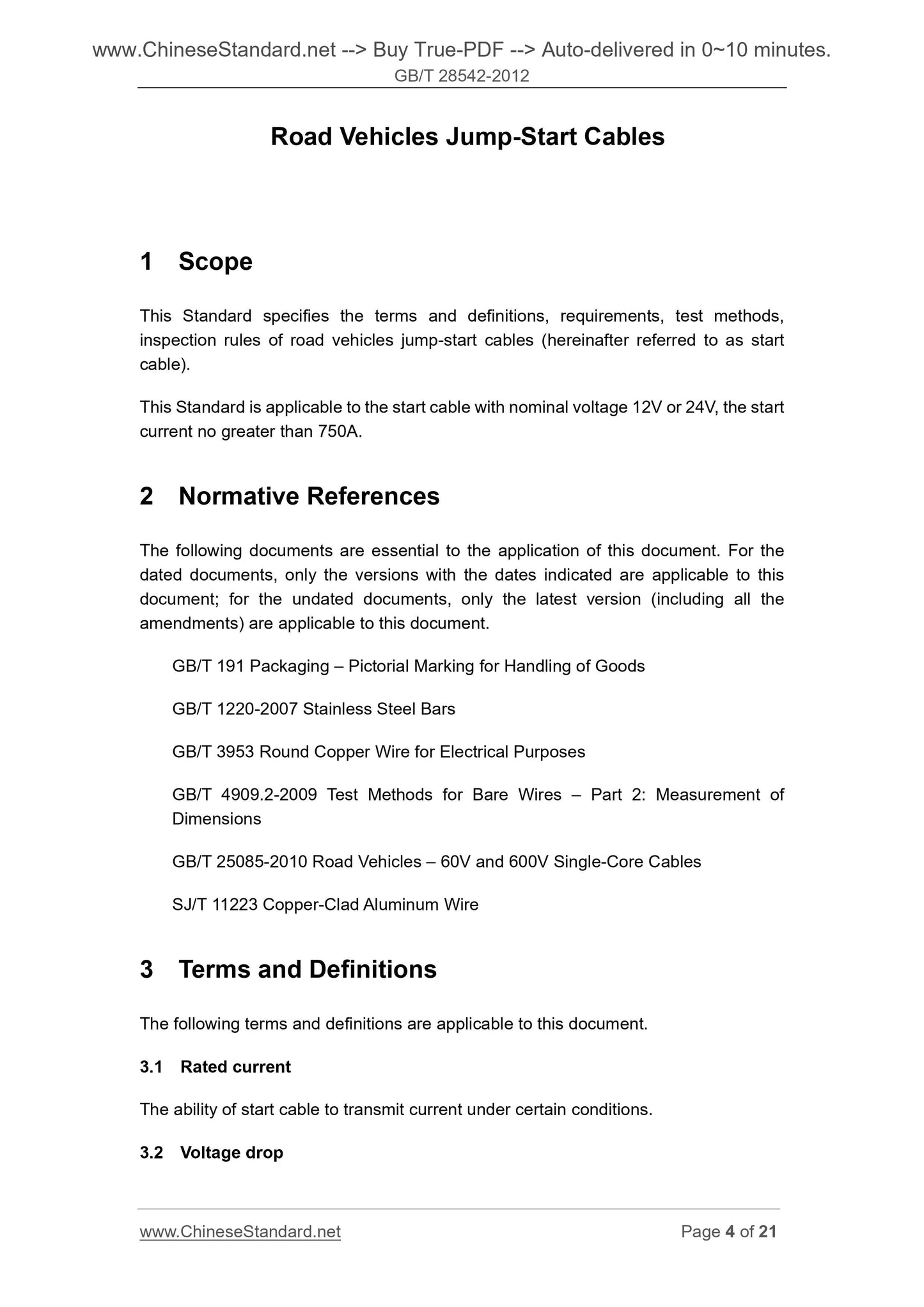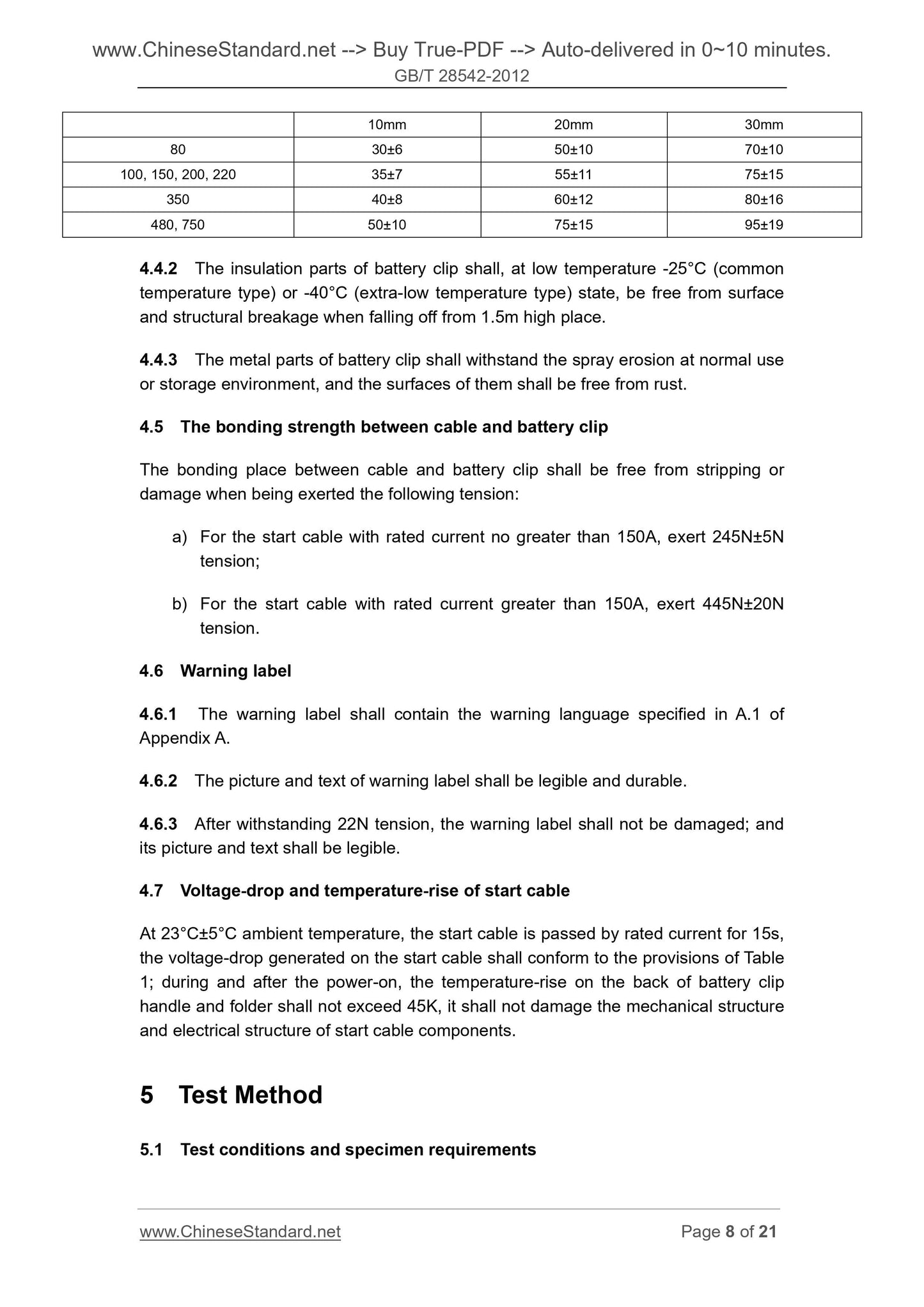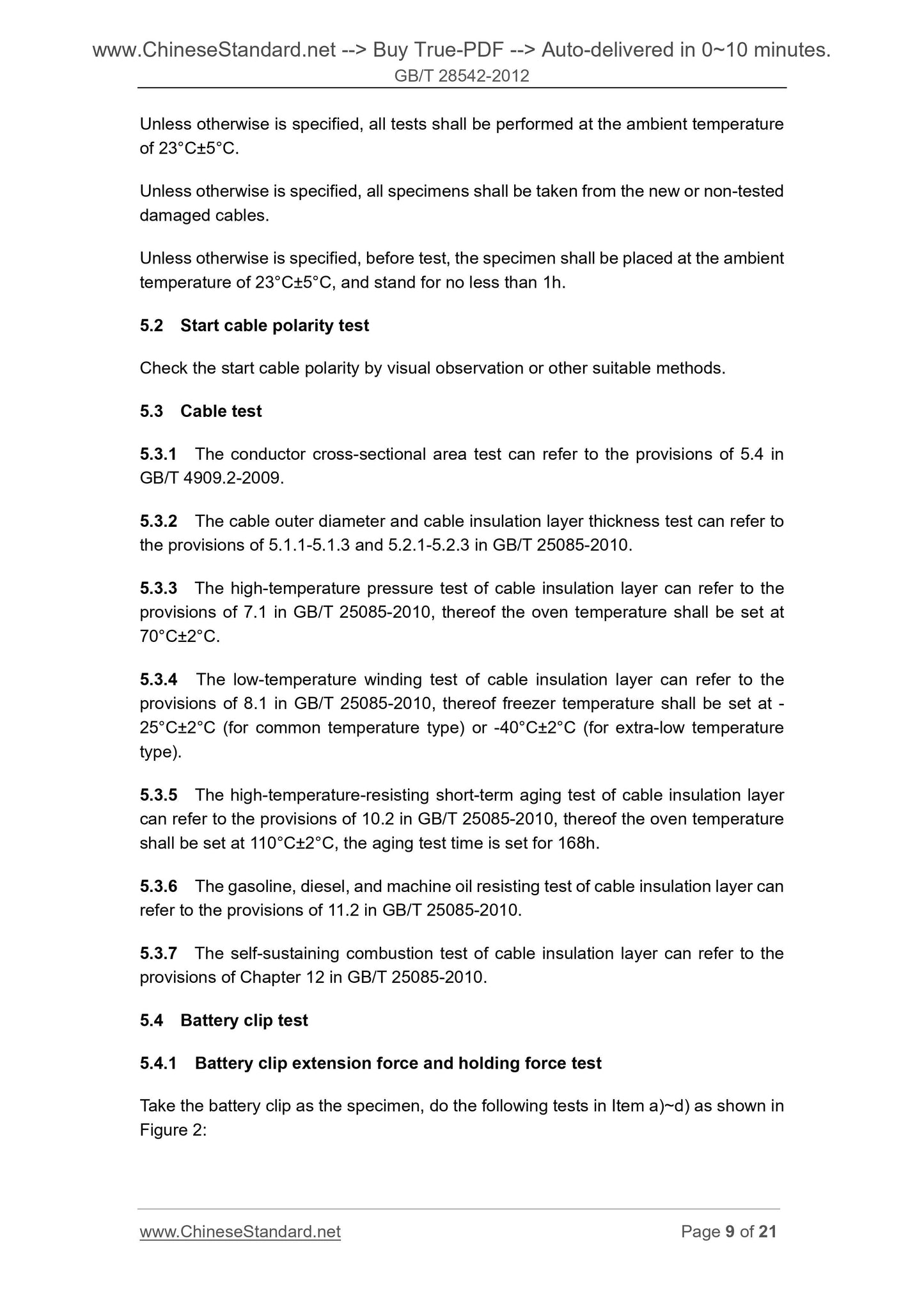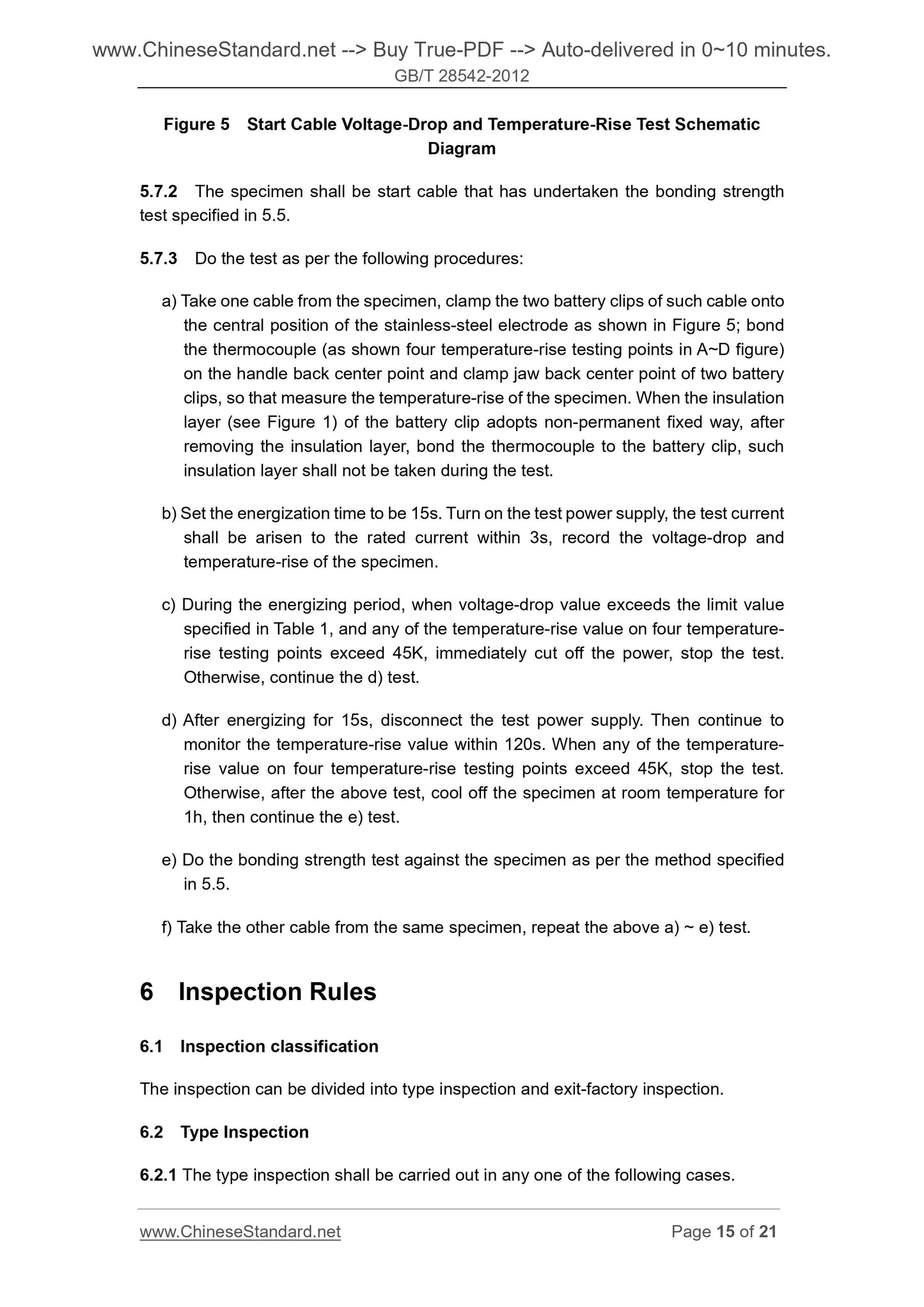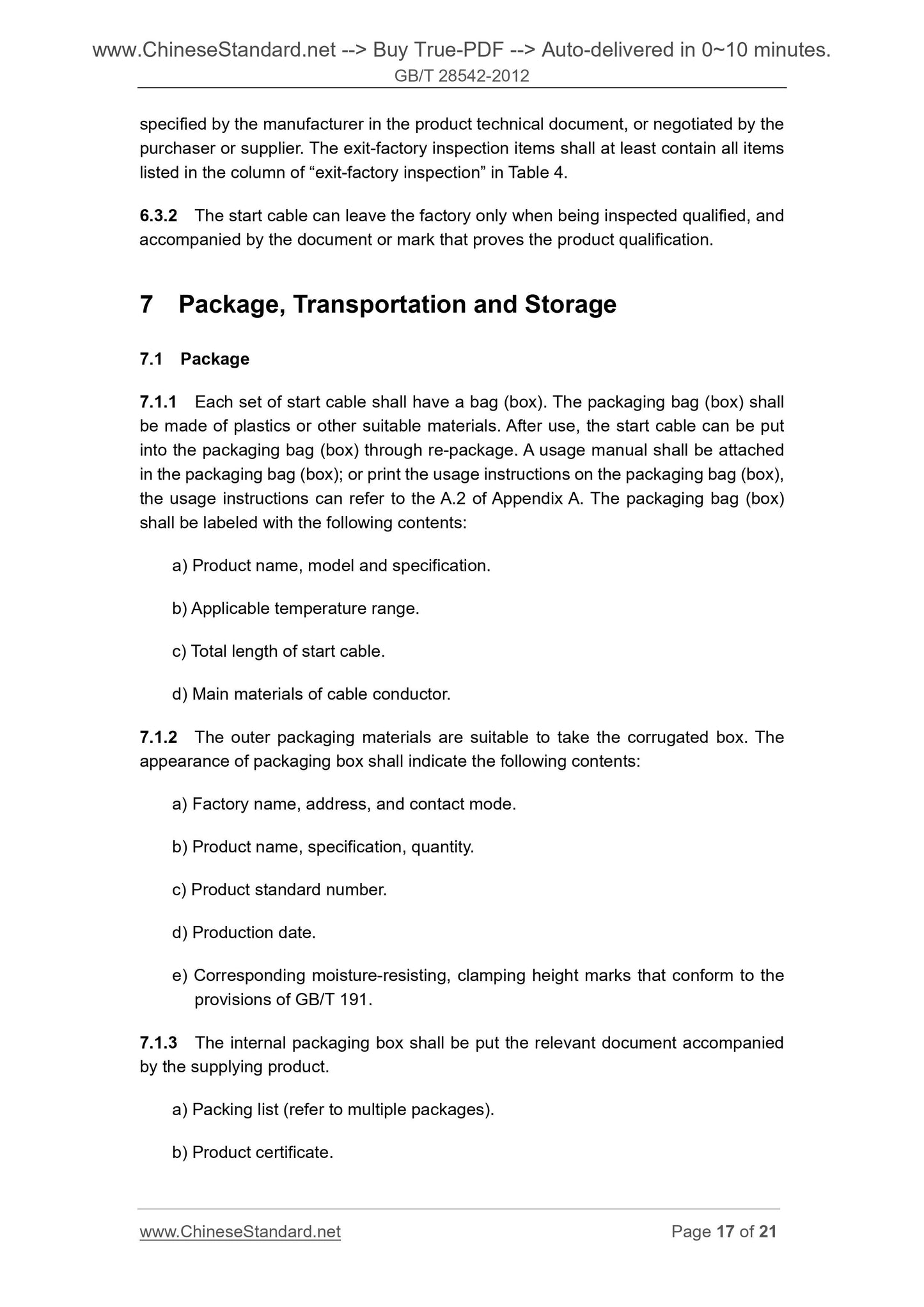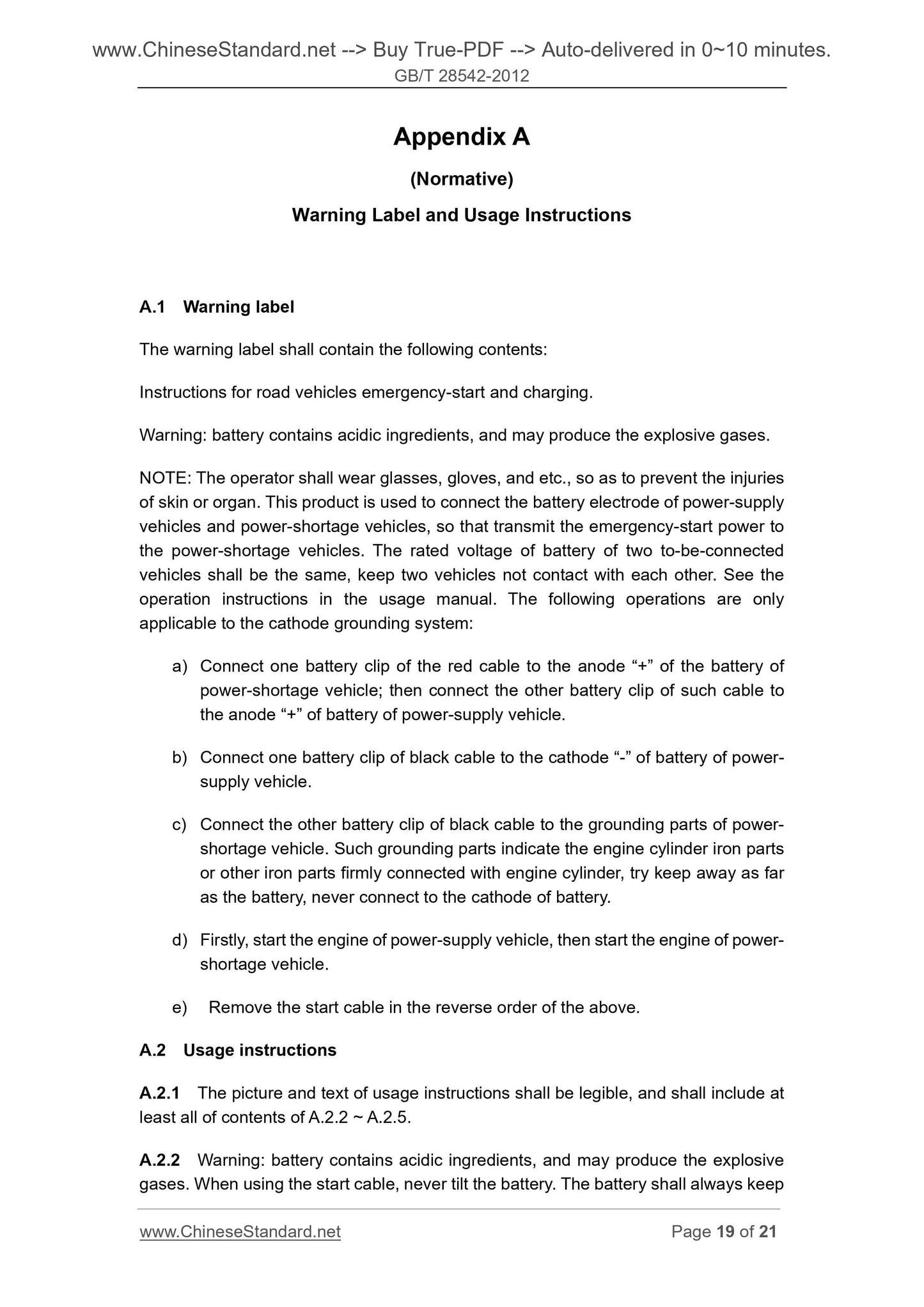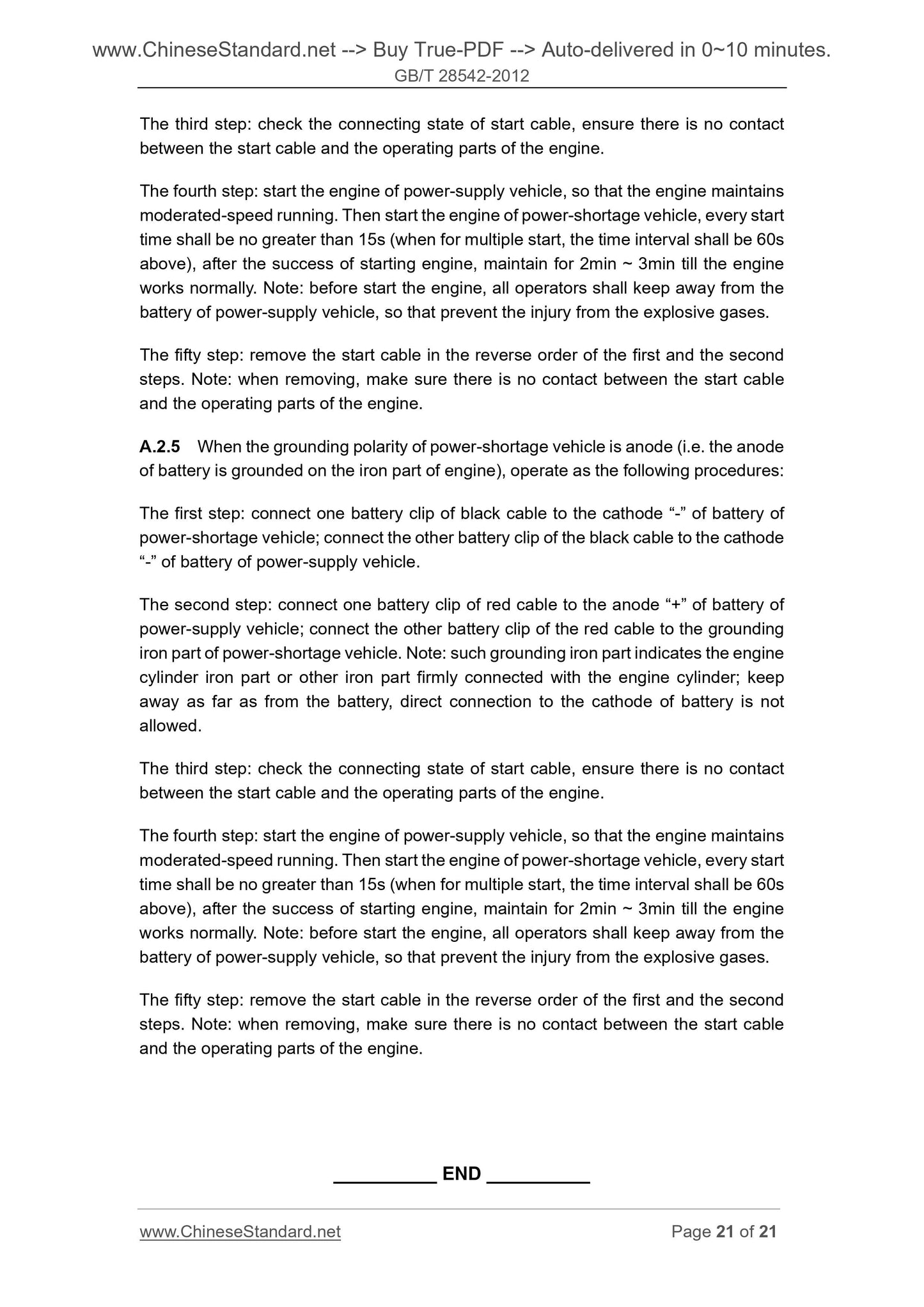1
/
of
10
www.ChineseStandard.us -- Field Test Asia Pte. Ltd.
GB/T 28542-2012 English PDF (GB/T28542-2012)
GB/T 28542-2012 English PDF (GB/T28542-2012)
Regular price
$140.00
Regular price
Sale price
$140.00
Unit price
/
per
Shipping calculated at checkout.
Couldn't load pickup availability
GB/T 28542-2012: Road Vehicles Jump-Start Cables
Delivery: 9 seconds. Download (and Email) true-PDF + Invoice.Get Quotation: Click GB/T 28542-2012 (Self-service in 1-minute)
Newer / historical versions: GB/T 28542-2012
Preview True-PDF
Scope
This Standard specifies the terms and definitions, requirements, test methods,inspection rules of road vehicles jump-start cables (hereinafter referred to as start
cable).
This Standard is applicable to the start cable with nominal voltage 12V or 24V, the start
current no greater than 750A.
Basic Data
| Standard ID | GB/T 28542-2012 (GB/T28542-2012) |
| Description (Translated English) | Road Vehicles Jump-Start Cables |
| Sector / Industry | National Standard (Recommended) |
| Classification of Chinese Standard | T37 |
| Classification of International Standard | 43.040.10 |
| Word Count Estimation | 15,174 |
| Quoted Standard | GB/T 191; GB/T 1220-2007; GB/T 3953; GB/T 4909.2-2009; GB/T 25085-2010; SJ/T 11223, |
| Regulation (derived from) | National Standards Bulletin No. 13 of 2012 |
| Issuing agency(ies) | General Administration of Quality Supervision, Inspection and Quarantine of the People's Republic of China, Standardization Administration of the People's Republic of China |
| Summary | This standard specifies the way for emergency vehicles starter cable (hereinafter referred to as starter cable) terms and definitions, requirements, test methods, inspection rules. This standard applies to a nominal voltage of 12V or 24V, starting current |
Share
